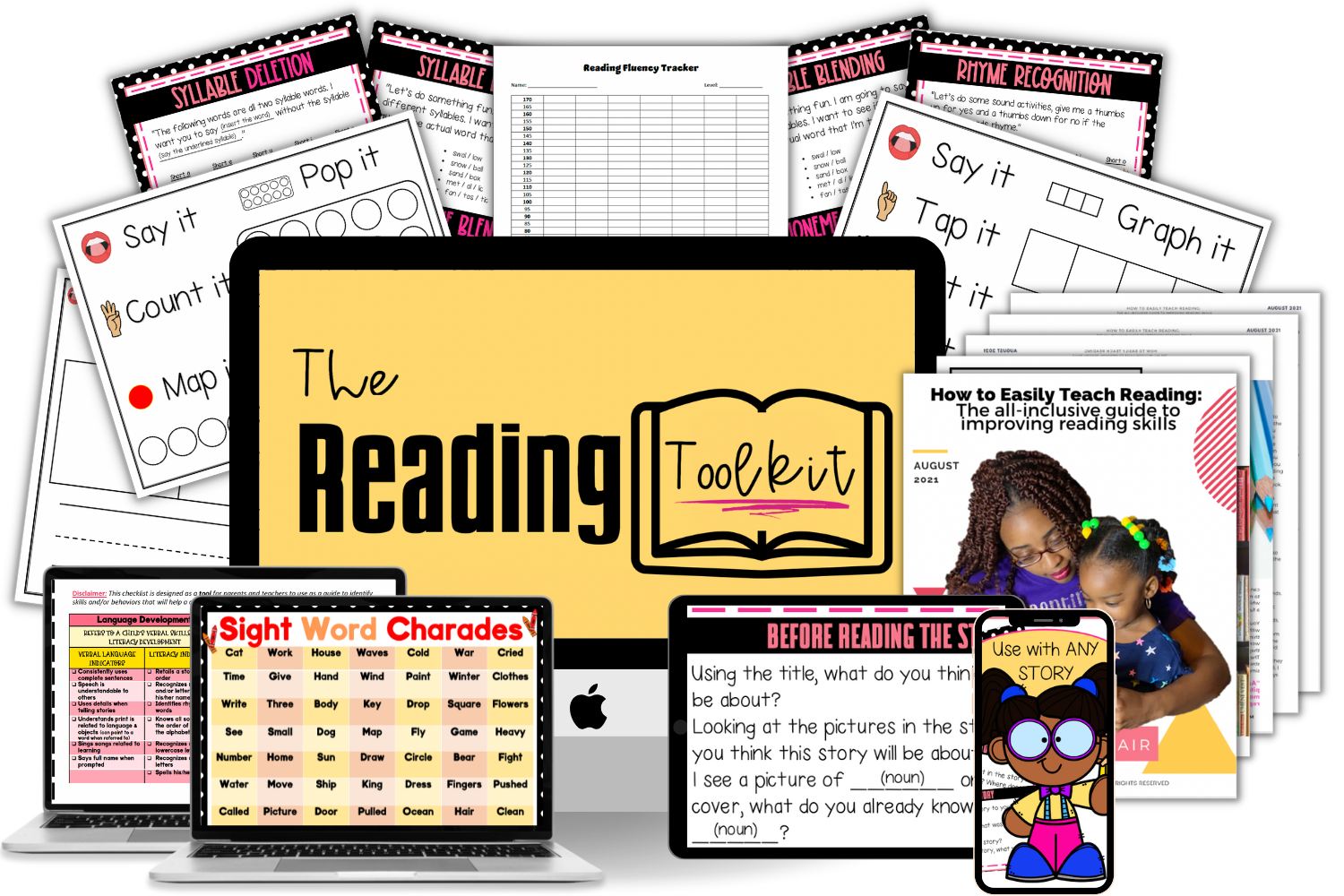From Phonemes to Fluency: A Guide to Building Strong Reading Skills with the 5 Components of Reading
Apr 22, 2023by Aja McNair
Reading is an essential skill that forms the foundation for learning in many areas. However, not everyone is born with the ability to read effortlessly. It is a skill that needs to be learned, and the five components of reading are the building blocks that make up this skill. In this blog, we will explore each of the five components of reading and their importance in developing strong reading skills.
Phonemic Awareness
Phonemic awareness is the ability to hear and manipulate the individual sounds in words. This includes being able to identify the beginning, middle, and end sounds in words, as well as blend sounds together to form words. Phonemic awareness is a critical skill that forms the foundation for all other aspects of reading. Children who lack phonemic awareness may struggle with reading comprehension and fluency, as well as spelling.
To improve phonemic awareness, parents and educators can use activities such as rhyming games, sound matching, and phoneme segmentation. These activities can help children develop their phonological awareness and improve their ability to manipulate sounds in words.
Phonics
Phonics is the relationship between sounds and letters. By understanding these relationships, readers can decode unfamiliar words and develop their reading fluency. Phonics instruction typically involves teaching children the sounds associated with each letter and how to blend these sounds together to form words.
Effective phonics instruction should be systematic and explicit, meaning that it should be taught in a specific order and clearly explained to the student. Parents and educators can use phonics games and activities to reinforce these skills and provide opportunities for practice.
Vocabulary
Vocabulary refers to the set of words a reader knows and understands. Having a broad vocabulary is essential for comprehending what you're reading, as well as for communicating effectively in daily life. Vocabulary can be learned in a variety of ways, including reading, listening, and speaking.
To improve vocabulary, parents and educators can encourage children to read widely and expose them to a variety of texts. They can also provide explicit instruction on the meaning of new words and encourage children to use these words in their own writing and speaking.
Reading Comprehension
Comprehension is the ability to understand what you're reading. This involves not only understanding the individual words but also how they fit together to convey meaning. Effective comprehension instruction should focus on teaching students to use strategies such as predicting, visualizing, and questioning to improve their understanding of the text.
To improve comprehension, parents and educators can encourage children to ask questions about what they are reading and provide opportunities for discussion. They can also use graphic organizers and other tools to help children visualize the text and identify the main ideas and supporting details.
Reading Fluency
Reading fluency is the ability to read smoothly and accurately at a reasonable speed. Fluent readers are able to focus on the meaning of the text rather than on decoding individual words. Fluency can be improved through repeated reading, which involves reading the same text multiple times until it can be read fluently.
To improve fluency, parents and educators can provide opportunities for children to read aloud and practice reading at a comfortable pace. They can also use texts with a high degree of predictability and repetition to help children build fluency.
This FREE Reading Toolkit can help with teaching all five components of reading. The Reading Toolkit is the only FREE resource that helps you to teach all 5 components of your reading instruction WITHOUT ever feeling overwhelmed. This FREE Reading Toolkit helps you teach structured literacy and so much more by helping you teach Phonological Awareness (sounds), Phonics (connecting letters with sounds), Vocabulary (automaticity of words), Fluency (rate and accuracy of reading words), and Reading Comprehension (understanding what stories mean).
With this Reading Toolkit, you will Teach Foundational Reading Skills, Effectively Plan for Instruction, and Teach Reading with EASE. The Reading Toolkit includes Science of Reading Aligned Resources, Teacher Guides & Resource, Rinse and Repeat Teaching Prompts to avoid Teacher Burnout, and Fluency Resources & Games.
In conclusion, reading is a complex skill that involves multiple components. By understanding the five components of reading and providing targeted instruction in each of these areas, parents and educators can help children develop strong reading skills that will serve them well in all areas of life. Phonemic awareness, phonics, vocabulary, comprehension, and reading fluency are all essential for building a strong foundation in reading, and with the right support, every child can learn to read with confidence and joy.
Lessen your stress by downloading my FREE Activity guide that features 3 activities that you can use with any lesson, standard or skill. In this FREE ebook, you will also get my FREE School Charades Icebreaker game.



